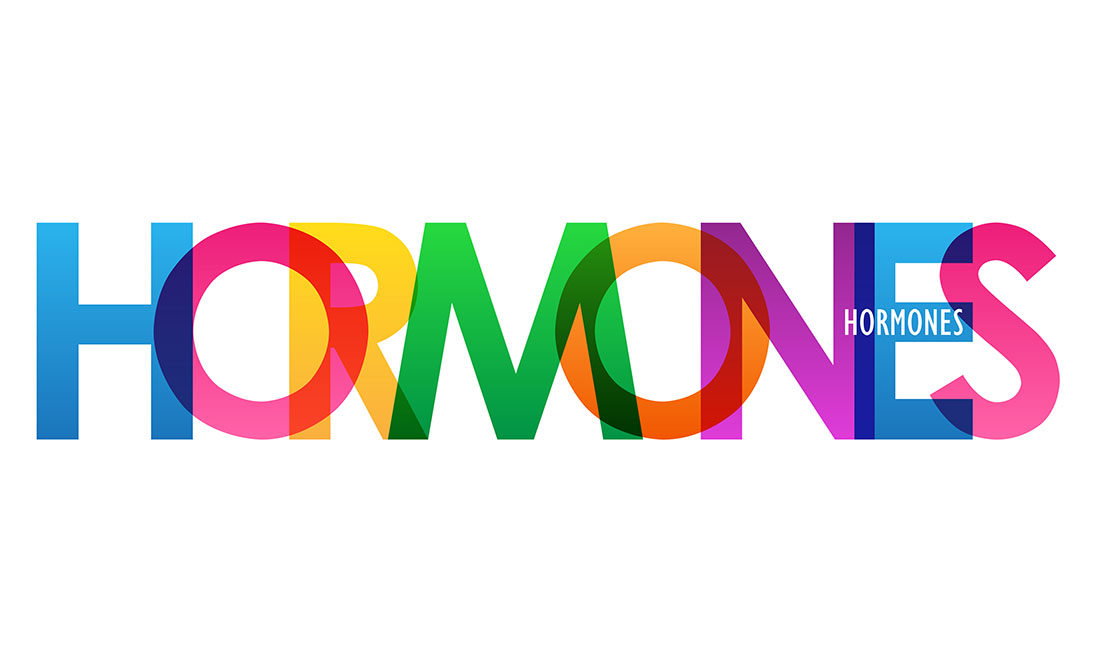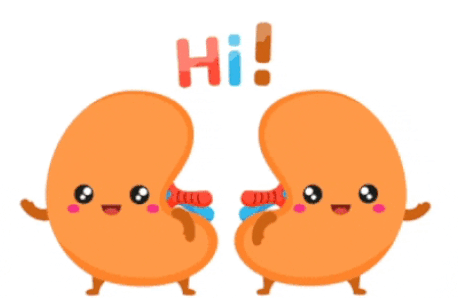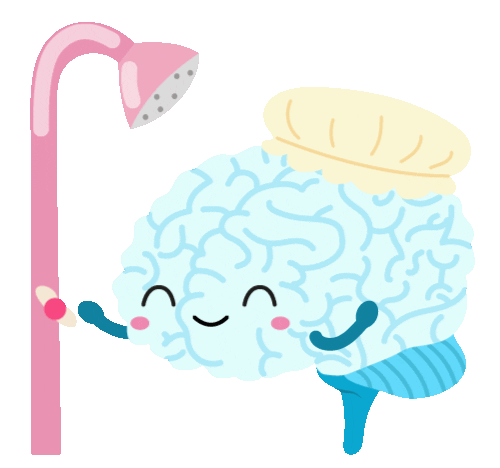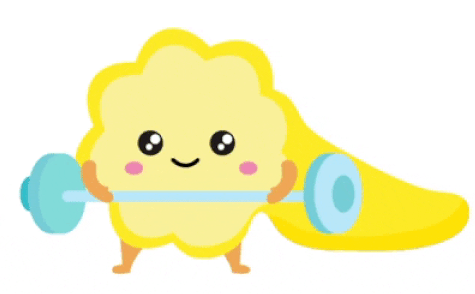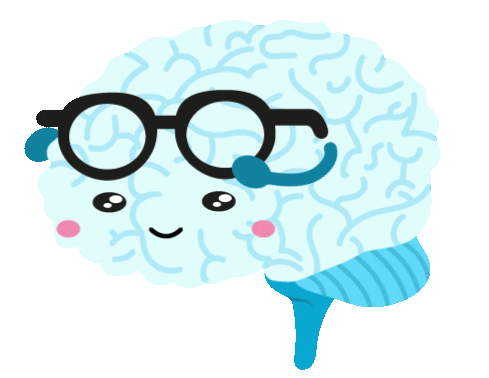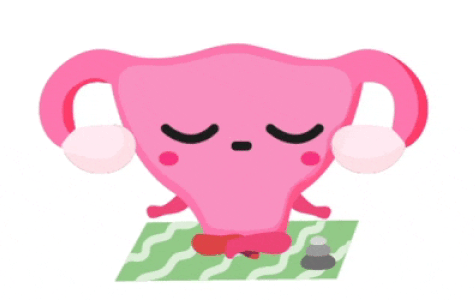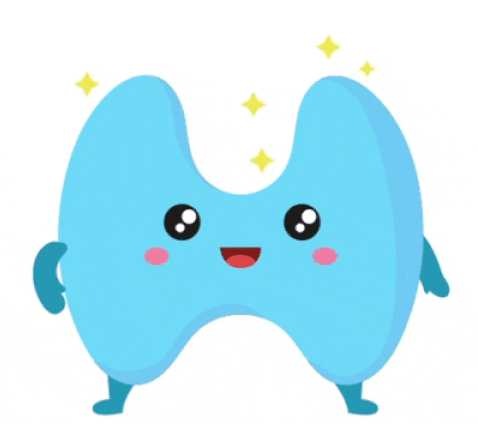If hormones were a Greek god, they would be Hermes the messenger – the body’s postal service that sends information from one place to another.
These powerful chemical communicators affect our mood, fertility, appetite, sex drive, sleeping cycle and much more.
But what are hormones, where do they come from and why are they important?
What are they?
Hormones are molecules produced by the endocrine system. Other parts of the body can also produce hormones, such as the placenta in pregnant women.
Once released into the bloodstream, hormones work on a lock and key system. Each hormone (the key) has a particular configuration that fits the target organ or cell with the corresponding binding site (the lock).
There are many types of hormones in the body, and they’re classified by what they’re made of. There are three common types.
Lipid-derived hormones
Most of these types of hormones come from cholesterol. Yes, the same cholesterol found in food – the body produces it too! These types of hormones end in ‘-ol’ and ‘-one’, such as the stress hormone cortisol and male sex hormone testosterone.
These hormones have a different chemical structure to the other two types, plus they can move across cell membranes.
Amino acid-derived hormones
Amino acids are the building blocks for proteins. These types of hormones often end in ‘-ine’ – like the fight or flight hormone adrenaline or thyroxine, which regulates the body’s metabolism as well as digestive and heart function.
These hormones can be used in medications too. Adrenaline is the main component of EpiPens, which help individuals in anaphylaxis.
Peptide and protein hormones
Unlike amino acid-derived hormones, peptide or protein hormones are made of chains of amino acids rather than a single amino acid. For this one, we’re looking at things like the love hormone oxytocin.
Along with serotonin and dopamine, oxytocin is part of a trio of ‘happy hormones’. When you’re attracted to someone, your brain releases dopamine, your serotonin and oxytocin levels increase and you feel a flood of happiness.
Where do they come from?
Lots of our organs produce hormones. They’re also manufactured, like the contraceptive pill, and found in medications. Thyroxine, which is used to aid an underactive thyroid gland, is one example.
It’s a long list of where our hormones come from, but let’s meet some of the big players.
Adrenals
Your heart rate increases, pupils dilate and airways to the lungs expand. What’s happened?
Your adrenals have kicked in with the production of adrenaline! These small but mighty glands above our kidneys also produce our stress hormone cortisol, aldosterone, which helps regulate blood pressure, and some of our sex hormones.
Hypothalamus
You’re in a hot room in the peak of summer, your face has turned red and you’re sweating profusely. What’s happened?
Your hypothalamus has sensed a temperature imbalance and stimulated your sweat glands to cool you down.
The hypothalamus is a big contributor to hormone production. It releases hormones that affect cells in the body and stimulates other organs to release or inhibit hormone production. It’s a link between the nervous system and the endocrine system, maintaining the balance of many of the body’s systems (otherwise known as homeostasis).
Temperature is just one of the many roles the hypothalamus contributes to. Others include body temperature, thirst, hunger, emotions, sleep cycles, sex drive and functions like heart rate and blood pressure.
Pancreas
You’ve gone to your nephew’s 10th birthday party and gorged yourself on lollies, chips and cake. What happens to all that sugar?
The pancreas produces insulin to regulate your sugar levels! Insulin promotes extra sugar, glucose in its smallest form, to be absorbed by the cells in your muscles, fat and liver for energy.
However, people with type 1 diabetes don’t produce insulin and have to inject themselves with it regularly to stabilise their blood sugar levels. People with type 2 diabetes don’t respond to insulin as well as they should.
Pituitary gland
Congratulations! You’ve given birth to a healthy baby and noticed your breasts are bigger and have started leaking milk. What’s going on?
The hormone prolactin (among others) is released by the pituitary gland to stimulate breast growth and milk production.
Growth and reproduction are two of the pituitary’s roles, but hormones produced by this gland affect most of the hormone-producing organs, which is why it’s sometimes called the master gland.
Sex organs
The sex organs (ovaries for female-bodied individuals and testes for male-bodied individuals) produce the sex hormones oestrogen, progesterone and testosterone. These hormones prepare the body for reproduction.
Interestingly, oestrogen – the hormone responsible for developing and maintaining fertility and female characteristics – is produced by the ovaries in female-bodied individuals pre-menopause but is predominantly from fat cells or the adrenals post-menopause.
Thyroid and parathyroids
Our last two big players are the thyroid and parathyroid glands. The thyroid is a butterfly-shaped gland located at the front of the neck. The parathyroid glands, four tiny glands, sit just behind the thyroid.
The thyroid releases hormones that regulate metabolic rate (that’s the rate at which your body expends energy). These include thyroxine (T4) and triiodothyronine (T3). As the process of expending energy releases heat, the thyroid also plays a role in body temperature!
The parathyroid glands don’t influence metabolism but instead regulate calcium levels in the body through a hormone known as the parathyroid hormone.
Why are hormones important?
Hormones make things happen!
They’re the masters of communication, with feedback loops constantly providing information to trigger the production or reduction of hormones.
It’s like your mate WHO never has a filter on what they say.
This super-sensitive feedback loop ensures the body can maintain its functioning in a highly stimulating and changing environment.
These chemical communicators are vital to healthy bodily function. They affect our movement, mood, sleep and wellbeing. They maintain the status quo – our homeostasis.
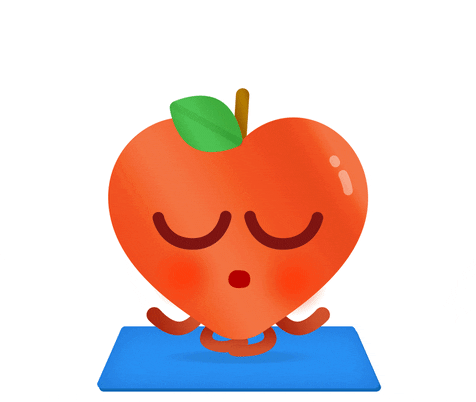
Of course, like all communication and like all delicate balancing acts, sometimes it doesn’t quite go as planned.
Hormonal imbalances can cause many diseases. (To be fair, they can cure some as well.) Falling levels of oestrogen during menopause can cause bone loss, and hormones can promote or prevent pregnancy, flare up or heal acne and rev up or cool down our sex drive.
The bottom line is we need hormones. These effective messengers help our body survive and thrive in our ever-changing world.



